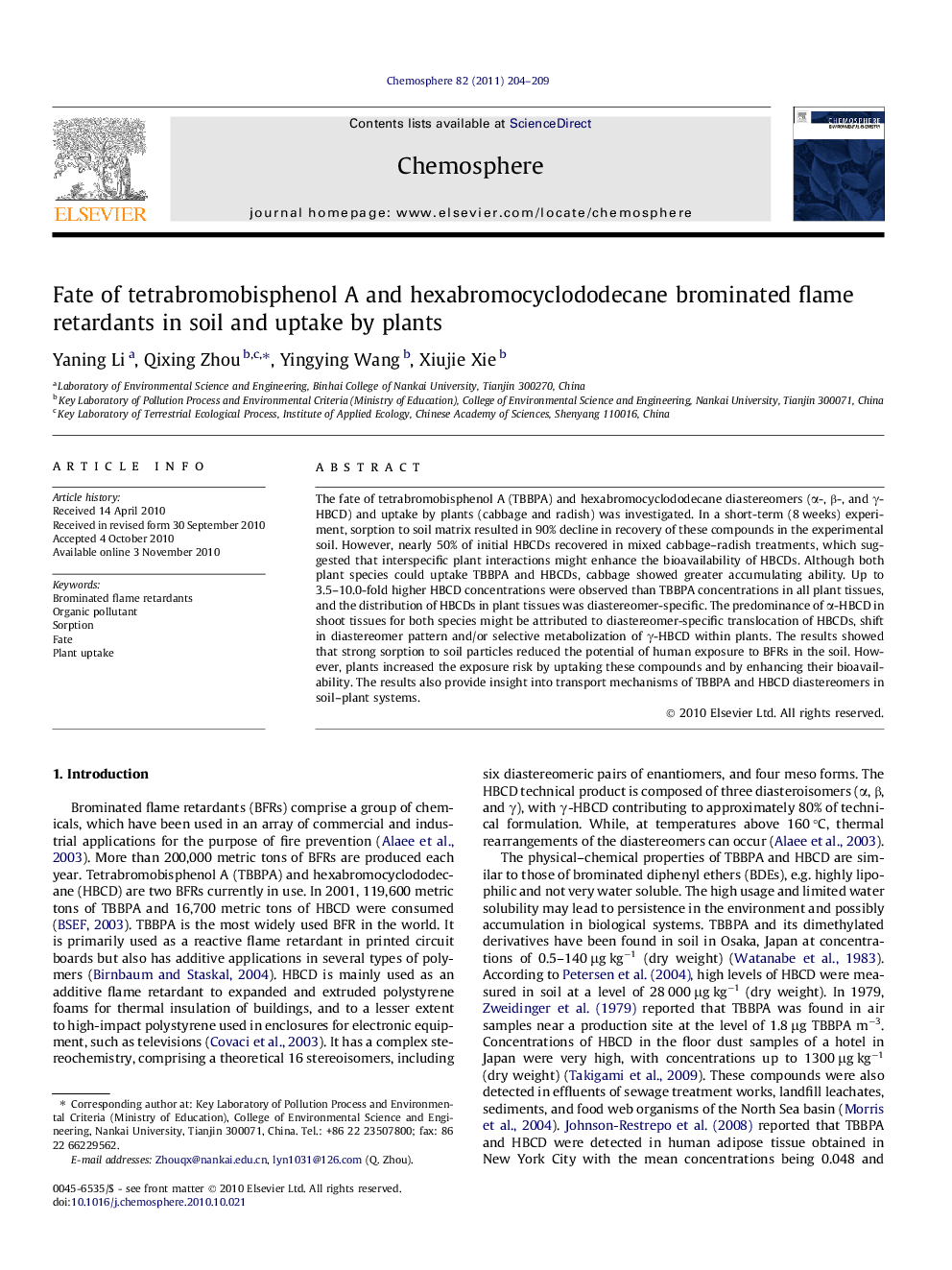| کد مقاله | کد نشریه | سال انتشار | مقاله انگلیسی | نسخه تمام متن |
|---|---|---|---|---|
| 4411148 | 1307580 | 2011 | 6 صفحه PDF | دانلود رایگان |

The fate of tetrabromobisphenol A (TBBPA) and hexabromocyclododecane diastereomers (α-, β-, and γ-HBCD) and uptake by plants (cabbage and radish) was investigated. In a short-term (8 weeks) experiment, sorption to soil matrix resulted in 90% decline in recovery of these compounds in the experimental soil. However, nearly 50% of initial HBCDs recovered in mixed cabbage–radish treatments, which suggested that interspecific plant interactions might enhance the bioavailability of HBCDs. Although both plant species could uptake TBBPA and HBCDs, cabbage showed greater accumulating ability. Up to 3.5–10.0-fold higher HBCD concentrations were observed than TBBPA concentrations in all plant tissues, and the distribution of HBCDs in plant tissues was diastereomer-specific. The predominance of α-HBCD in shoot tissues for both species might be attributed to diastereomer-specific translocation of HBCDs, shift in diastereomer pattern and/or selective metabolization of γ-HBCD within plants. The results showed that strong sorption to soil particles reduced the potential of human exposure to BFRs in the soil. However, plants increased the exposure risk by uptaking these compounds and by enhancing their bioavailability. The results also provide insight into transport mechanisms of TBBPA and HBCD diastereomers in soil–plant systems.
Journal: Chemosphere - Volume 82, Issue 2, January 2011, Pages 204–209